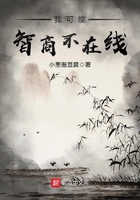The ZIG-ZAG CLOVER, COW or MARL-GRASS (T.Medium), a native of Europe and Asia, now naturalized in the eastern half of the United States and Canada, may scarcely be told from the common red clover, except by its crooked, angular stems - often provokingly straight - by its unspotted leaves, and the short peduncle in which its heads are elevated above the calyx.
Farmers here are beginning to learn the value of the beautiful CRIMSON, CARNATION or ITALIAN CLOVER or NAPOLEONS (T.
incarnatum), and happily there are many fields and waste places in the East already harboring the brilliant runaways.The narrow heads may be two and a half inches long.A meadow of this fodder plant makes one envious of the very cattle that may spend the summer day wading through acres of its deep bright bloom.
GOAT'S RUE; CAT-GUT; HOARY PEA or WILD SWEET PEA(Cracca Virginiana; Tephrosia Virginiana of Gray) Pea family Flowers - In terminal cluster, each 1/2 in.long or over, butterfly-shaped, consisting of greenish, cream-yellow standard, purplish-rose wings, and curved keel of greenish yellow tinged with rose; petals clawed; 10 stamens (9 and 1); calyx 5-toothed.
Stem: Hoary, with white, silky hairs, rather woody, 1 to 2 feet high.Leaves: Compounded of 7 to 25 oblong leaflets.Root: Long, fibrous, tough.Fruit: A hoary, narrow pod, to 2 in.long.
Preferred Habitat - Dry, sandy soil, edges of pine woods.
Flowering Season - June-July.
Distribution - Southern New England, westward to Minnesota, south to Florida, Louisiana, and Mexico.
Flowers far less showy and attractive than this denizen of sandy wastelands, a cousin of the wisteria vine and the locust tree, have been introduced to American gardens.Striking its long fibrous root deep into the dry soil, the plant spreads in thrifty clumps through heat and drought - and so tough are its fibers they might almost be used for violin strings.As in the case of the lupine, the partridge pea and certain others akin to it, the leaves of the hoary pea "go to sleep" at night, but after a manner of their own, i.e., by lying along the stem and turning on their own bases.
In similar situations from New York south and southwestward, the MILK PEA (Galactia regularis; G.glabella of Gray) lies prostrate along the ground, the matted, usually branched stems sending up at regular intervals a raceme of rose-purple flowers in July and August from the axil of the trefoliate leaf.
TRAILING BUSH CLOVER
(Lespedeza procumbens) Pea family Flowers - Purplish pink or violet, veined, the butterfly-shaped ones having standard petal, wings, and keel, clustered at end of peduncles; the minute flowers lacking a corolla, nearly sessile.
Calyx of 5 slender, nearly equal lobes.Stems: Prostrate, trailing, or sometimes ascending, woolly or downy, leafy.Leaves:
Clover-like, trefoliate.Fruit: A very small, hairy, flat, rounded, acute pod.
Preferred Habitat - Dry soil open, sandy places.
Flowering Season - August-September.
Distribution - Massachusetts to the Gulf, and westward to the Mississippi.
Springing upward from a mass of clover-like leaves, these showy little blossoms elevate themselves to arrest, not our attention, but the notice of the passing bee.As the claw of the standard petal and the calyx are short, he need not have a long tongue to drain the nectary pointed out to him by a triangular white mark at the base of the banner.Now, as his weight depresses the incurved keel, wherein the vital organs are protected, the stigma strikes the visitor in advance of the anthers, so that pollen brought on his underside from another flower must come off on this one before he receives fresh pollen to transfer to a third blossom.At first the keel returns to its original position when depressed; later it loses its elasticity.But besides these showy flowers intended to be cross-fertilized by insects, the bush clovers bear, among the others, insignificant-looking, tightly closed, bud-like ones that produce abundant self-fertilized seed.
The petaliferous flowers are simply to counteract the inevitable evils resulting from close inbreeding.One usually finds caterpillars of the "dusky wings" butterfly feeding on the foliage and the similar tick trefoils which are its staple.At night the bush clover leaves turn upward, completely changing the aspect of these plants as we know them by day.Michaux named the group of flowers for his patron, Lespedez, a governor of Florida under the Spanish regime.
Perhaps the commonest of the tribe is the VIOLET BUSH CLOVER (L.
violacea), a variable, branching, erect, or spreading plant, sometimes only a foot high, or again three times as tall.Its thin leaves are more elliptic than the decidedly clover-like ones of the preceding species; its rose-purple flowers are more loosely clustered, and the stems are only sparingly hairy, never woolly.
On the top of the erect, usually unbranched, but very leafy stem of the WAND-LIKE BUSH CLOVER (L.frutescens), the two kinds of flowers grow in a crowded cluster, and more sparingly from the axils below.The clover-like leaflets, dark green and smooth above, are paler and hairy below.Like the rest of its kin, this bush clover delights in dry soil, particularly in open, sandy places near woods of pine and oak.One readily distinguishes the SLENDER BUSH CLOVER (L.Virginica) by the very narrowly oblong leaves along its wand, which bears two kinds of bright rose flowers, clustered at the top chiefly, and in the axils.
Yellowish-white flowers, about a quarter of an inch long, and with a purplish-rose spot on the standard petal to serve as a pathfinder to the nectary, are crowded in oblong spikes an inch and a half long or less on the HAIRY BUSH CLOVER (L.hirta).The stem, which may attain four feet, or half that height, is usually branched; and the entire plant is often downy to the point of silkiness.














